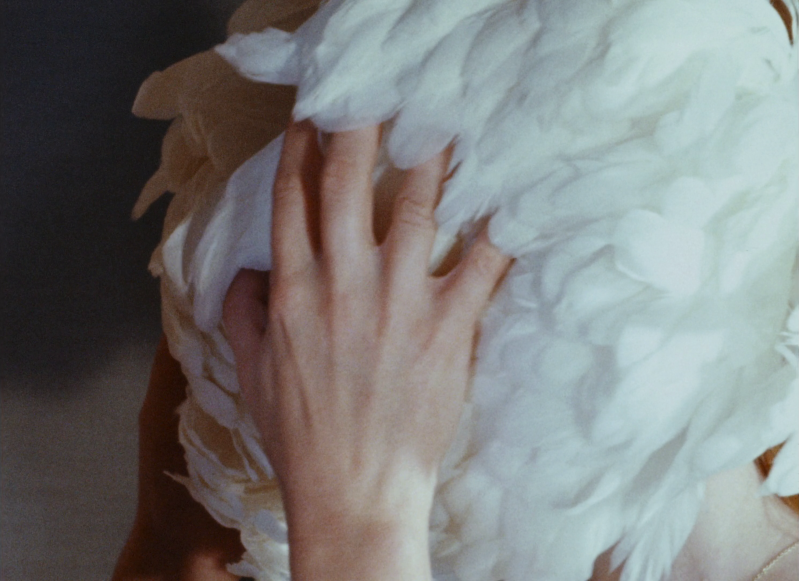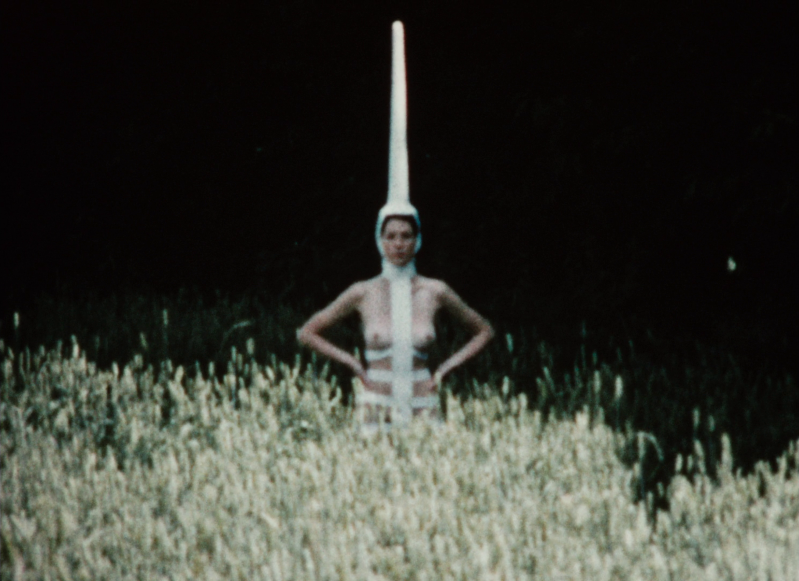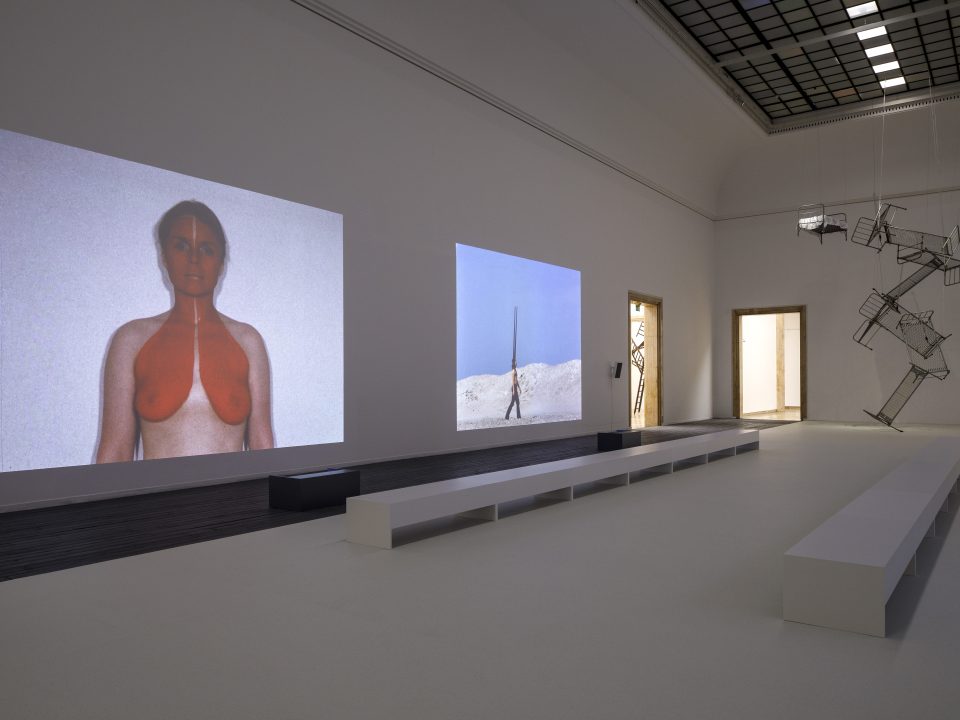This is a shortened version. The entire text can be found in the exhibition catalogue of "Rebecca Horn".
Stockholm, January 19, 2024
Dear Rebecca Horn,
I am not sure you will read this letter. It is important to tell you, however, about the resonance of your work. Your strange, magnificent, elusive, and enthralling work. I was going to write an essay for this catalogue, titled “Body. Score. Ob- ject,” detailing the entangled relationships between these three notions in your performances, drawings, and sculptures. In a way, I follow the logic of body, score, and object, in my present writing, but I also came to realize that I need a different form of address—more personal, with space for intimate reflections and perhaps even a confession or two, a space where work is not historicized but lived and felt again, over and over.
I want to feel the feathers on my skin.
[…]
Respectfully,
Hendrik

Stockholm, January 21, 2024
Dear Rebecca Horn,
I sit with your performances, watch them over and over again. They change how I look at the contours of a body; that thin, almost nonexistent line where a body ends and the world begins. That line is vibrating and slowly starts to diminish. Körperfarben [Body Paintings] draws me in. In stop-motion sequences you paint on a female body. At first, swathes of red paint slide up her feet, ankles, calves, knees, legs, thighs, and hips, simultaneously moving up from her hands, wrap- ping her wrists, lower arms, elbows, biceps, armpits, and the tip of her shoulder, until only her torso and head are uncovered. The paint is shiny, she becomes partly bionic. Her torso and head are dabbed by blue dots in another video, until almost no skin is visible. I think of “slither.” There is one performance video that makes me revolt, at first. I see a body from the back, standing in a pitch- black space, slowly receding in black paint. The paint closes in on the spine, the crack between butt cheeks, and the crevice between two legs. While her body is splitting in two, the paint consumes its halves until they disappear into each other. It’s the stuff of nightmares, I think, as I mistake this for an act of erasure. If anything, like the other videos, it is an act of making visible.
Indeed, a body emerges. A body that knows—not relegated to nature alone, but that forms a space of knowledge. Maurice Merleau-Ponty, the great phenom- enological philosopher, refused the Cartesian separation between body and mind and paved the way for a great feminist like Elizabeth Grosz. In her book Volatile Bodies from 1994, she summarizes her thesis of “corporeal feminism.” As I see one body disappearing and another emerging in Körperfarben, I consider how Grosz paraphrases Merleau-Ponty: “It is through the body that the world of objects appears to me; it is in virtue of having/being a body that there are objects for me.” It is through the body that the world of art appears to me; it is in virtue of having/being a body that there is art for me.
Yours, admiringly,
Hendrik
[…]
Stockholm, January 26, 2024
[…]
It is tempting to think about these objects as attributes, the goddesses and gods inhabiting your world with their otherworldly accessories. However, from Einhorn [Unicorn] (1970–72) onward, these objects become more worldly, and other words emerge.
Mechanical
Prosthetic
Extended
Augmented
Kinetic
Indeed, through the horns, feathers, textile wings, and stick fingers, the body mechanizes, extends, augments, and, ultimately, expands. A cyborg in the making, nearly fifteen years before Donna Haraway published her influential manifesto on the cyborg as the “disassembled and reassembled, postmodern collective and personal self,” continuing with: “This is the self feminists must code.” I think you are one of its key authors.
You were not alone. Your fellow artist Ulrike Rosenbach bound the video cam- era to her body during live performances, feeding back the image to a monitor in the space, closed-circuit and in real time. VALIE EXPORT put her body in a touch-enabled cinema. Across the Atlantic, Hannah Wilke applied vagina- shaped pieces of chewing gum on her body, marking her body, emanating emergency signals. Senga Nengudi extended her body, made it elastic, sculptural, architectural, through her pantyhose sculptures.
You, them—artists who know that the body knows, who see the body as a site of knowledge production, who know that objects exist in relationship to that body. These are the things that happen before the philosopher Paul B. Preciado (then Beatriz Preciado) takes testosterone for one year, meticulously documented in his book Testo Junkie: Sex, Drugs, and Biopolitics in the Pharmocopornographic Era (2008), to probe how a body and its gender are (re)configured through the objects and industries of desire. The object is made subject, internalized and metabolized—“[t]o accept the fact that the change happening in me is the metamorphosis of an era.”
When the gigantic horn is mounted on the performer’s head in Head Extension (1972), his body needs to adjust. It is wavering, still tethered to the ground but unstable.
The threshold between the body and its prosthetics is dangerous, thrilling.
In exaltation,
Hendrik

Stockholm, January 28, 2024
[…]
I bend the paper of the book in which I encounter the score for Der Eintänzer, as this is not a flat field to plow or a rock to climb, but rather a tango to dance. The paper comes to life. My entire body gathers itself to read, from the feet to the cranium, as I imagine you gathered yours as you drew this, as you wrote this, and I enter this choreographic panorama. As I follow the lines and take two steps backward, turn, step sideward, two steps forward, turn again, the distinction between my body and these objects fades. Both are indiscrete.
You began with painting the surface of flesh, manipulating limbs with objects and extending them, adding objects to bodies so they would move together. You sculpted with bodies, until your sculptures become bodies.
[…]
New York, February 9, 2024
Dear Rebecca,
The most marvelous thing happened yesterday. I arrived in New York, the city you once called home. Dazed and confused from jet lag, I turned left on Walker and Broadway, and saw an egg on the street! Not an ostrich egg, but a regular one. (You can’t have it all, I guess.) For a moment, I thought I was hallucinating, so I took a photo. It was the most extraordinary thing—how this precious object was not immediately trampled. I observed it for a few moments: everyone acknowledged its presence, carefully walking around it, their pathway moving forward forever impacted. The egg must have been there for a while. Did you put it there?
Affectionately,
Hendrik
